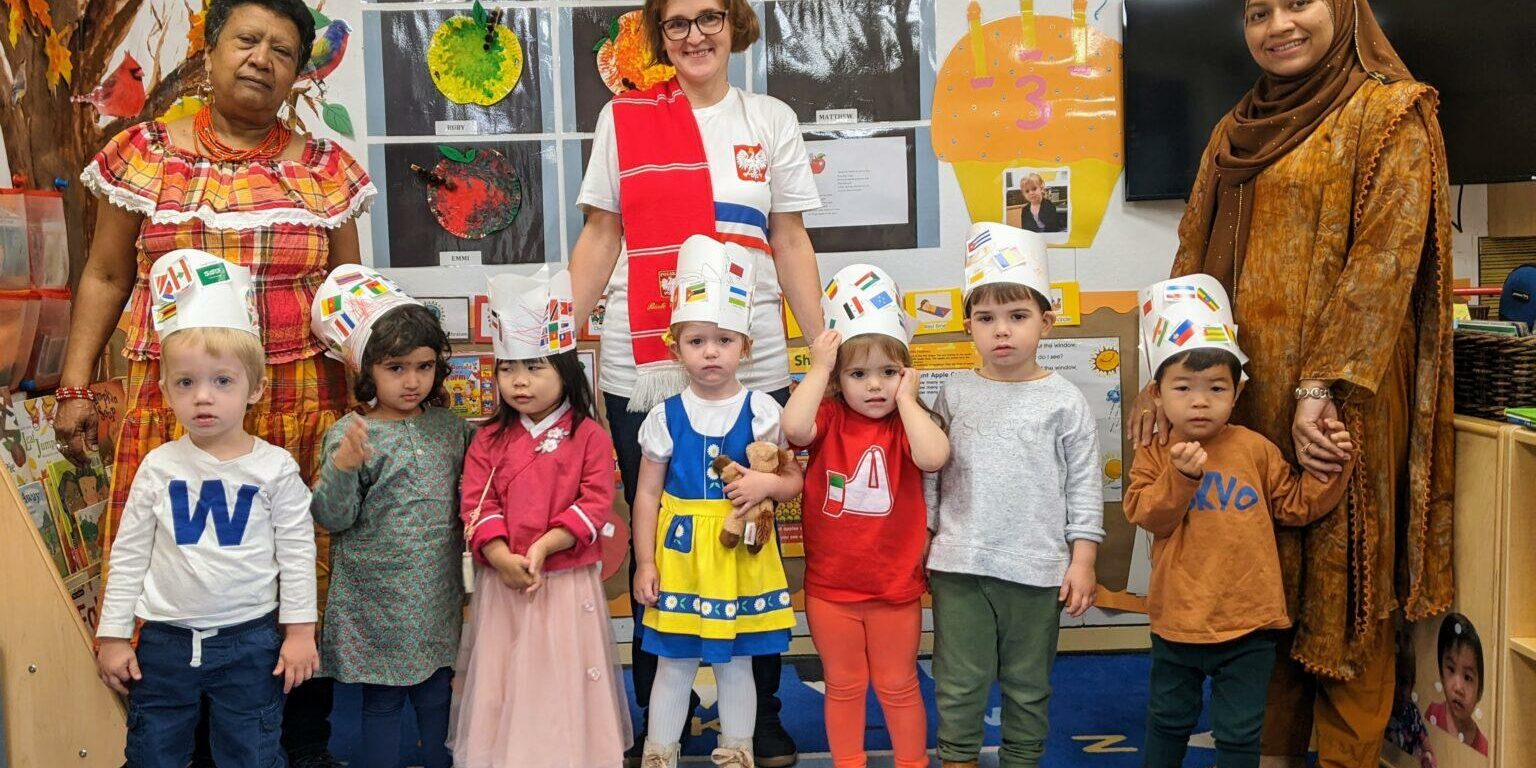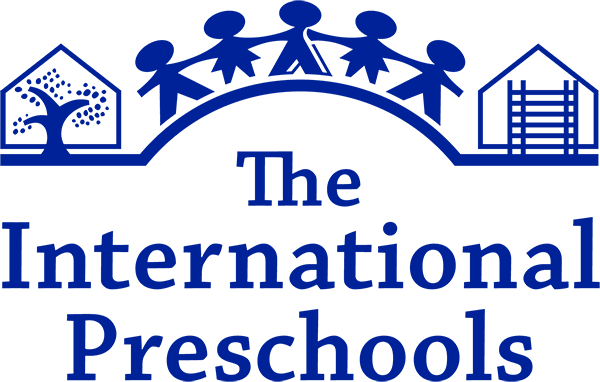Inside an IPS Classroom

At IPS, we believe in learning through play. Play is the serious work of young children. That is how they learn to understand the world. Unlike academic curricula for older children, which concentrate on content, at IPS our curriculum focuses on activities and skill development.
Through a play-based learning approach, children are presented with themes throughout the year. Some of these themes include:
- All About Me — families, flags
- Fall — leaves, apples, pumpkins
- Winter Solstice — celebrations of light around the world
Teachers are able to follow the themes of particular interest to their class. Recent emergent themes include transportation, farms, and doctor's offices.
Each area of the classroom embodies the current theme, which is fundamental to the play-based learning philosophy at IPS. Children use these play centers during Choice Time. They include:
Dramatic Play: At first glance, this might look like a pretend kitchen, but the teachers are thoughtful about the materials represented in this area to extend the children's learning. Sometimes, the dramatic play area is transformed into something completely different than a kitchen, but fitting for the current classroom theme. For example, during the fall unit, a class might convert their dramatic play center into a farmers’ market or an apple farm.
- Block Area: This area provides opportunities for problem solving, mathematical reasoning, creativity, and exploration. While children are learning to build and manipulate the different building materials, teachers purposefully provide elements of the current theme to be incorporated into the building.
- Discovery Center: This is an area for children to discover aspects of the current theme. They will find magnifying glasses with leaves and acorns during the fall, flashlights and a light table while learning about the winter solstice, or different shapes that make up international flags.
- Writing Center: All 3s, 4s, and 4/5s classes have a writing center to encourage children to strengthen their fine motor skills. The youngest 3s will find stickers, stamps, and chubby crayons, allowing them to practice pre-writing skills. In 4s and 4/5s classes, the writing center will have the children's names, different writing implements, scissors, and glue. This independent exploration allows children to take ownership of their early writing skills.
- Art Table: Each day, there is an art activity for the children related to the current theme. These student-led projects meet each child at their level and allow them to be comfortable with different materials and techniques.
- Library: Books have significance in IPS classrooms. In addition to the school library, each classroom has a bookshelf with thematic books for the children to peruse independently or with a teacher. Even before they can read, children engage with the images on the pages to create a narrative.
- Cozy Corner: This quiet spot in the classroom allows children to practice self-regulation skills. For the most part, this area remains static for the entire year, providing a consistent spot for children to practice their emotional intelligence and self-help skills.
Research shows that young children learn best with structured routines. Each class follows a visual schedule, and children are able to anticipate what comes next. Here is an example of a typical day for our students.
| Time | Activity |
|---|---|
| 9:00 | Arrival |
| 9:00-9:45 | Choice Time |
| 9:45-10:00 | Circle Time |
| 10:00-10:30 | Bathroom & Snack |
| 10:30-11:00 | Gym/Yard |
| 11-11:30 | Story Time, Songs, Movement |
| 11:30-12:00 | Specialty Class |
| 12:00 | Dismissal for Morning only students |
| 12:00-12:30 | Gym/Yard |
| 12:30-1:00 | Lunch |
| 1:00-2:00 | Rest Time |
| 2:00-2:45 | Choice Time |
| 2:45-3:00 | Story Time |
As the children get older, Circle Time increases in length. Many academic skills are practiced during Circle Time, including early literacy and early math development. In the 3s, 4s, and 4/5s classes, children practice counting the number of children in school, the number of days in the month, "read" the schedule and daily message, and learn poems and/or songs about their current theme.
Multiculturalism at IPS


Following the mission of The International Preschools, a key component of our play-based curriculum is celebrating what is shared and what is different among individuals and cultures. These include our physical attributes, languages spoken, and family make-up.
Making self-portraits and family portraits are signature projects at IPS. The children learn how people are all unique, yet alike in many ways. They refine their fine motor skills and identify different colors and shapes. They become comfortable sharing facts about themselves and their families. This information is used to create graphs and charts, increasing the children’s math skills and understanding.
We use national flags as a developmentally-appropriate representation of each child’s and each teacher’s cultural heritage. We ask parents to share their family’s country(ies) of origin and where they have lived. Some children represent multiple countries while others represent just one. All children are represented by the American flag because we are all living in the United States. Flags are omnipresent throughout the school and classrooms, both as physical flags and in the children’s artwork of flags on display. The teachers encourage the children to note similarities and differences among flags. How many of these flags have stars? Which direction do the stripes go?
Multiculturalism is a cornerstone of celebrations at IPS. Families are invited to join us in late October for UN Day, a celebration of the birth of the United Nations. For UN Day, we celebrate with an international sing-along and multicultural potluck snack. We encourage families to wear traditional clothing from their cultures. In mid-December, we come together as a community to celebrate the winter solstice with a sing-along that includes songs in different languages about light and festivals of light. We have a variety of additional cultural celebrations throughout the year that we celebrate as a school, including Diwali and Lunar New Year.

